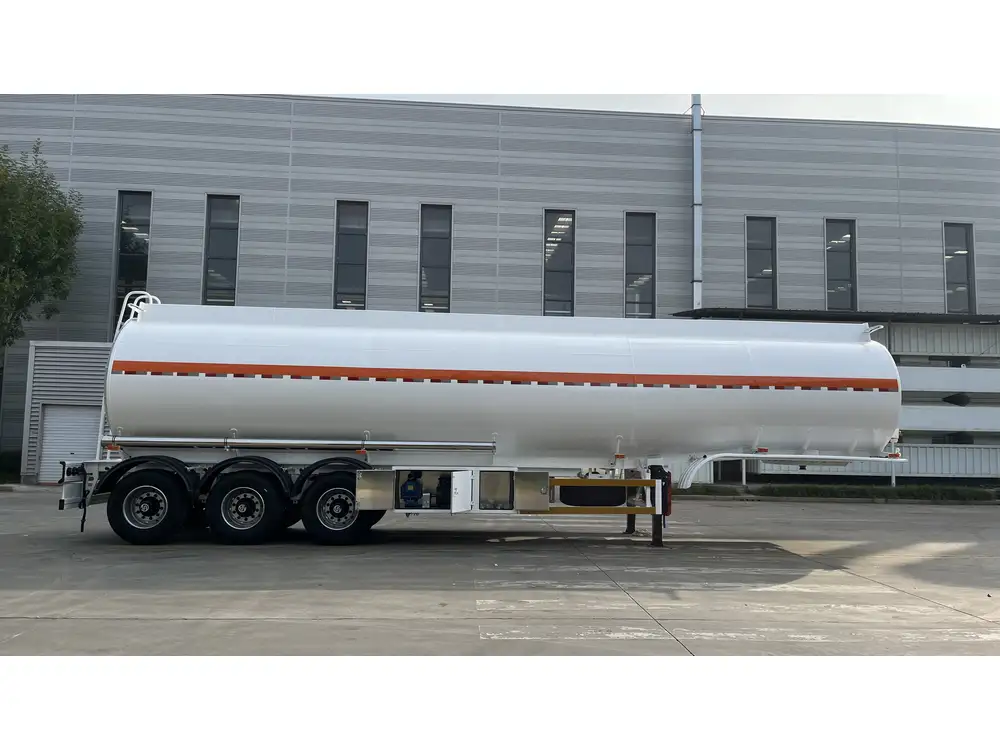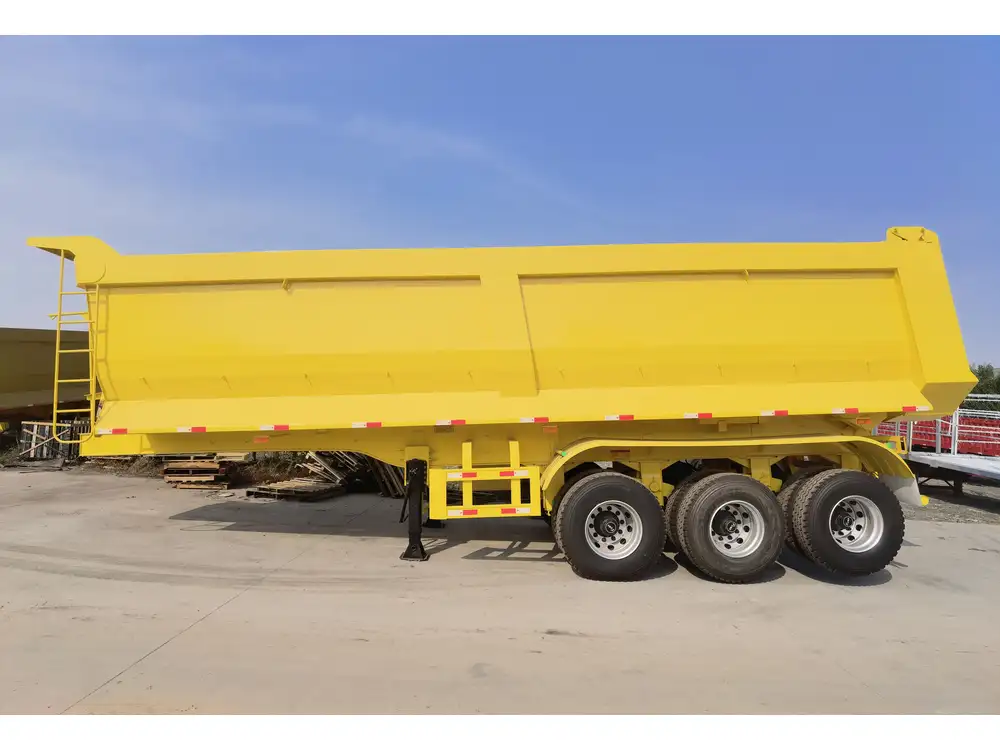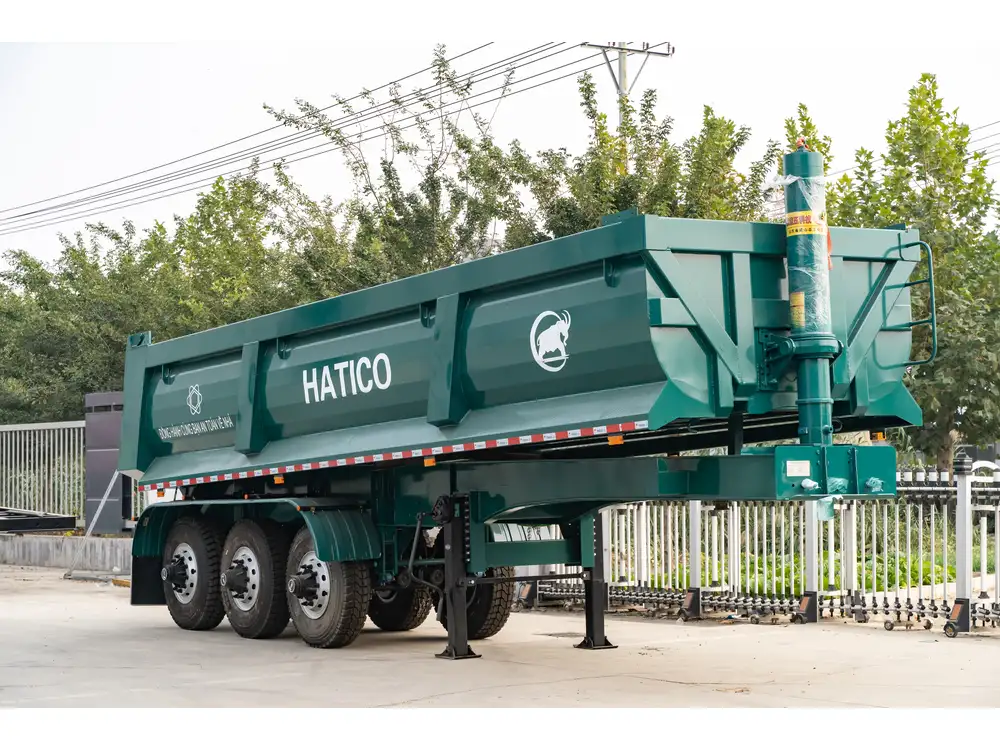Understanding the load capacity of an 18-wheeler dump trailer is crucial for manufacturers, truck operators, and logistics professionals alike. The weight it can carry directly influences operational efficiency, safety compliance, and cost-effectiveness. In this guide, we will delve into the technical specifications, factors affecting capacity, and best practices for maximizing load potential, while ensuring regulatory compliance.
The Basics of Dump Trailer Capacities
Definition and Design
An 18-wheeler dump trailer is a vehicle designed for transporting bulk materials, often used in construction, mining, or agricultural applications. The trailer typically features a hinged rear door and a hydraulic lift system, allowing the payload to be unloaded easily.

Table 1: Key Features of an 18-Wheeler Dump Trailer
| Feature | Description |
|---|---|
| Capacity Range | 10 to 30 cubic yards (or more, depending on design) |
| Gross Vehicle Weight Rating (GVWR) | Generally between 80,000 lbs and 120,000 lbs |
| Build Material | Steel, aluminum, or composite materials |
| Type of Hydraulic System | Single or double-acting cylinders |
Load Capacity
The load capacity of an 18-wheeler dump trailer varies based on the trailer design, its material, and dimensions. Most commonly, the weight capacity is dictated by two primary factors:
Material Density
- Different materials have distinct densities, influencing how much can be loaded. For example, dirt may weigh about 1,000 lbs per cubic yard, whereas gravel weighs around 1,500 lbs.
Regulatory Standards
- Compliance with federal and state regulations is imperative. Most states have a legal limit for GVWR, influencing how much weight can be legally transported.
Example Calculations
To provide a concrete understanding, let’s make a few calculations.
Total Capacity Formula:
[ \text{Total Capacity} (lbs) = \text{Cubic Yards} \times \text{Material Density (lbs/yd³)} ]
Scenario 1: If a dump trailer has a capacity of 15 cubic yards of dirt:
- [ 15 \, \text{yards} \times 1,000 \, \text{lbs/yard} = 15,000 \, \text{lbs} ]
Scenario 2: If the trailer carries gravel:
- [ 15 \, \text{yards} \times 1,500 \, \text{lbs/yard} = 22,500 \, \text{lbs} ]

Factors Influencing The Load Capacity
Several intricate factors influence how much an 18-wheeler dump trailer can hold:
1. Trailer Design
The design of the trailer plays a pivotal role in determining load capacity. Common configurations include:
- Standard Dump Trailers: Generally suited for average loads and materials.
- End Dump Trailers: Capable of handling larger payloads at certain angles, beneficial for specific applications.
- Side Dump Trailers: Allow unloading on either side; optimal for tight spaces.
2. Axle Configuration
The number and configuration of axles also contribute to the overall weight capacity. Common configurations include:
- Single Axle: Lower capacity, suitable for lighter materials.
- Tandem Axle: Increased capacity, often used for standard applications.
- Tridem Axle: Provides maximum stability and weight distribution, ideal for heavier loads.

3. Trailer Material
The choice of material impacts both capacity and durability. Steel trailers usually have a higher load capacity compared to aluminum counterparts, though they may be heavier. However, aluminum trailers offer reduced weight, which can allow for higher payloads.
4. Weight Distribution
Equally crucial is how the weight is distributed within the trailer. An unevenly distributed load can lead to instability, affecting safety and handling characteristics while driving.
5. Truck Specifications
The specifications of the truck itself also dictate capacity limits. Engine power, frame strength, and braking capabilities must align with the trailer’s load to ensure safe transportation.

Common Uses of 18-Wheeler Dump Trailers
Understanding how these trailers are used can provide more insight into their capacities. Below are some common applications:
Construction
Dump trailers are essential in construction for transporting materials like sand, gravel, and concrete. This sector often requires trailers with higher capacity to manage heavier loads due to ongoing projects.
Agriculture
Farm operations frequently use dump trailers for transporting crops, soil amendments, or feed. The specific materials can vary, affecting the load calculations.

Mining
In mining, dump trailers carry ore, waste materials, and other heavy loads. High-capacity trailers are typically required to handle the dense materials mined from the earth.
Regulatory Compliance and Weight Limits
Federal Regulations
To maintain safety standards and road integrity, the Federal Highway Administration (FHWA) has established weight limits for commercial vehicles. Here are the key weight regulations for 18-wheelers:
- Maximum GVWR: 80,000 lbs on interstate roads.
- Axle Weight Limits: Generally, 20,000 lbs for single axles and 34,000 lbs for tandem axles.

State Regulations
It’s imperative to note that states may have additional regulations that can affect load limits, weight distribution, and required permits. Consulting local laws can help ensure compliance.
Best Practices for Maximizing Dump Trailer Capacity
To ensure efficient usage while complying with safety and regulatory standards, follow these best practices:
1. Accurate Load Calculations
Always calculate potential loads before loading materials. Miscalculating can lead to vehicle overloading, costly fines, and safety hazards.

2. Regular Maintenance
Proper maintenance of both the trailer and towing vehicle ensures that weight limits are not compromised and that the vehicle remains safe for operation. Key maintenance checks include:
- Tire pressure
- Brake functionality
- Hydraulic systems
3. Load Distribution
Ensure that the load is distributed as evenly as possible across the trailer. This balance promotes stability during transit, reducing the risk of tipping or rolling over.
4. Training Operators
Provide training for operators on best practices for loading and operating dump trailers. Well-trained drivers can significantly reduce the risks related to overweight loads or poor loading practices.

5. Utilize Technology
Investing in advanced monitoring systems that can track weight distribution and hydraulic performance can enhance operational efficiency. This technology often includes load cells or weight scales calibrated to ensure compliance with loading standards.
Frequently Asked Questions
How do I know if my dump trailer is overloaded?
Overloading is indicated by several warning signs:
- Decreased handling or control while operating.
- A shift in the trailer’s balance or functionality of the hydraulic system.
- Unusual tire wear or road damage.

What is the ideal weight for safe transport?
While the maximum allowed weight may be 80,000 lbs including trailer and payload, it is advisable to underload to about 75% of the total capacity to maintain optimal control and safety margins.
Can different materials change loading capacity?
Yes, different materials come with various densities, affecting the total load weight that can be safely transported.
Conclusion
Understanding the capacity of an 18-wheeler dump trailer is critical for ensuring safe and efficient transportation of heavy materials. By considering factors such as trailer design, axle configuration, material density, and regulatory compliance, operators can optimize load strategies while fostering safety on the road. Our comprehensive guide equips you with the knowledge to maximize the potential of your dump trailers responsibly, leading to improved operational efficacy and reduced costs.
By incorporating best practices and utilizing advanced technology, we can navigate the complexities of load capacity, setting a benchmark in the industry. Whether in construction, agriculture, or mining, a well-informed operator makes the ultimate difference in maintaining safety and efficiency across the board.



